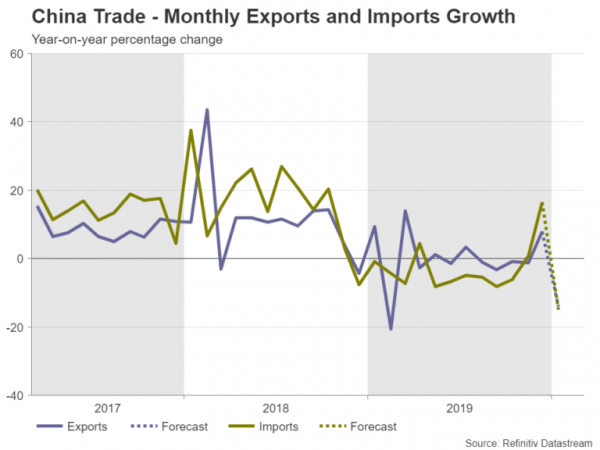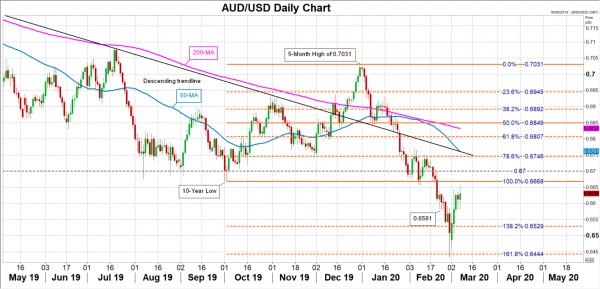China will report trade numbers for February on Saturday – the first since authorities imposed lockdowns on many cities – and so the data will be seen as an important barometer to how badly business activity was impacted by the outbreak of the coronavirus. Any indication that the factory shutdowns had a far more devastating effect on the economy than is currently being predicted is likely to spark more panic selling of risk assets when markets open on Monday.
January bounce not expected to have stretched into February
Manufacturers got off to a good start in 2020 as easing trade tensions with the United States helped Chinese exporters increase their global shipments by 7.9% year-on-year in January. However, just as the economic outlook had started to brighten, the deadly spread of the coronavirus is threatening to wreak greater damage to the world economy than the 2008 financial crisis did.
Manufacturing and services PMIs released already pointed to a collapse in output in those sectors in February and the trade figures will be the first hard data to likely confirm a large-scale fallout. According to a Refinitiv poll, analysts are forecasting that exports tumbled by 14.0% y/y in February, while imports are expected to have plummeted by 15.0% y/y.
Disappointing data could spoil aussie’s rebound
Worse numbers than those forecasted are very possible when considering the extent of the restrictions on travel and business operations on large swaths of the country. And given how reactive markets have become to negative virus-related news, disappointing trade data is likely to pressure stocks, as well as the yuan and the Australian dollar, which is sensitive to China-related trades.
Having pulled back from 11-year lows, aussie/dollar could reverse lower from renewed concerns about China’s economy, cutting its rebound short, though downside moves would also depend on whether selling pressure on the greenback itself eases at all. If there is a negative turn, aussie/dollar could seek support at the 138.2% Fibonacci extension of the October-December uptrend at 0.6529 before heading for the February trough of 0.6432.
But if the trade figures aren’t quite as grim as being projected, market reaction might be limited with the aussie taking advantage of the dollar’s weakness to recover back above the $0.67 level.
Virus focus shifting from China to other countries
It’s worth bearing in mind that the focus now has turned to how fast the virus is spreading in the rest of the world as many countries seem unprepared to deal with the outbreak. While in China, the number of new cases has been steadily declining and many businesses are restarting their operations, suggesting a possible bounce in economic activity in March.
This doesn’t mean that the trade data doesn’t have the potential to upset markets on Monday, but going forward, Chinese indicators may gradually move out of the spotlight, with European, Japanese and US gauges receiving far more scrutiny.















